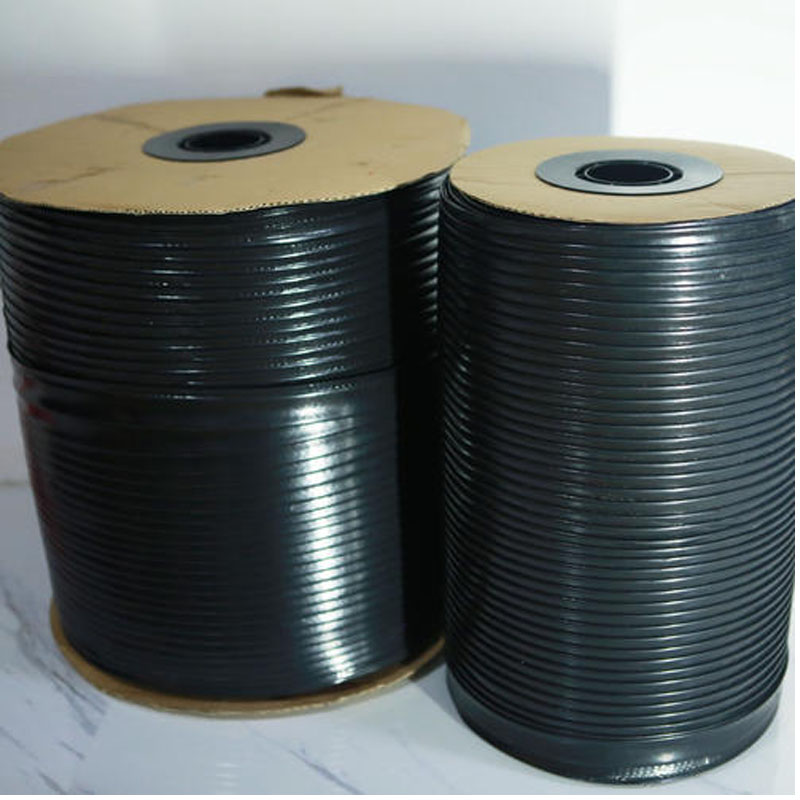Dec . 13, 2024 03:33 Back to list
HDPE Piping Solutions for Safe and Efficient Drinking Water Distribution
The Benefits of HDPE Pipe for Potable Water Solutions
High-Density Polyethylene (HDPE) has emerged as a preferred material for piping systems, particularly for potable water applications. Its widespread acceptance stems from its unique properties, making it an ideal choice for delivering safe, clean drinking water. This article explores the advantages of HDPE pipe in potable water systems, focusing on its durability, safety, and eco-friendliness.
Durability and Longevity
One of the most significant advantages of HDPE pipe is its remarkable durability. HDPE is resistant to corrosion, which is a common problem in traditional metal pipes. This resistance ensures that the pipes maintain their integrity over time, reducing the risk of leaks and breakages. In comparison with other materials, HDPE has a longer lifespan, often exceeding 50 years. This durability helps municipalities and water utility companies save on maintenance and replacement costs. Furthermore, HDPE pipes can withstand extreme temperatures, pressures, and conditions, making them suitable for a wide range of environments.
Safety and Health Considerations
When it comes to potable water, safety is paramount. HDPE pipes are an excellent choice because they do not leach harmful chemicals into the water supply. Unlike PVC or other plastics, HDPE is free of toxic substances such as BPA and phthalates. This makes it a non-toxic option for transporting drinking water, ensuring that the water remains pure and safe for consumption. Additionally, HDPE pipes are produced under strict quality controls, which helps to assure users of their safety and reliability.
Moreover, HDPE’s smooth internal surface is resistant to biofilm growth, which can harbor bacteria and other pathogens. This smoothness contributes to improved water quality and reduces the risk of contamination. Overall, HDPE pipes provide a safe medium for potable water transport, aligning with public health needs and regulatory standards.
Environmental Benefits
In today’s world, sustainability is a crucial consideration in all industries, including the water sector. HDPE pipes are made from recyclable materials, contributing to reduced waste and promoting a circular economy. The manufacturing process of HDPE also consumes less energy compared to traditional materials like cement or metal. As a result, the carbon footprint associated with HDPE pipe production is significantly lower.
hdpe pipe for potable water products

Additionally, the lightweight nature of HDPE pipes simplifies handling and installation. This not only reduces transportation emissions but also leads to less excavation and disruption during installation, further minimizing environmental impact. The longevity and durability of HDPE contribute to less frequent replacements, resulting in a lower overall environmental footprint over the life cycle of the product.
Cost-Effectiveness
Cost is a major factor in choosing materials for water systems. Although HDPE pipes might have a higher upfront cost compared to some other materials, the long-term savings on maintenance and replacement make them a more economical choice in the long run. The ease of installation, required fewer fittings, and reduced labor costs all contribute to lower overall project expenses. Water utilities can inject these savings back into their systems, ultimately benefiting the communities they serve.
Versatility and Flexibility
HDPE pipes are incredibly versatile, suitable for a wide range of applications within potable water systems. They can be used in various scenarios including buried, above-ground, and even submerged installations. The flexibility of HDPE allows it to be installed in challenging terrains and tight spaces where traditional piping systems might fail or be more complicated to implement.
Moreover, advancements in HDPE technology have led to the development of fusion-welded joints that create a monolithic system resistant to leaks and failures. This innovation improves the overall reliability of the water supply network.
Conclusion
In conclusion, HDPE pipes offer numerous benefits for potable water systems, including durability, safety, environmental sustainability, cost-effectiveness, and versatility. As communities continue to address the challenges of delivering clean, safe drinking water, HDPE stands out as a reliable and innovative solution. Adopting HDPE technology not only ensures public health but also contributes to sustainable water management practices that are essential for future generations. As such, it is clear that HDPE pipes are not just a trend but a vital component of modern water infrastructure.
-
High-Quality PVC Borehole Pipes Durable & Versatile Pipe Solutions
NewsJul.08,2025
-
High-Quality PVC Perforated Pipes for Efficient Drainage Leading Manufacturers & Factories
NewsJul.08,2025
-
High-Quality PVC Borehole Pipes Durable Pipe Solutions by Leading Manufacturer
NewsJul.08,2025
-
High-Quality PVC Borehole Pipes Reliable PVC Pipe Manufacturer Solutions
NewsJul.07,2025
-
High-Quality UPVC Drain Pipes Durable HDPE & Drain Pipe Solutions
NewsJul.07,2025
-
High-Quality Conduit Pipes & HDPE Conduit Fittings Manufacturer Reliable Factory Supply
NewsJul.06,2025

